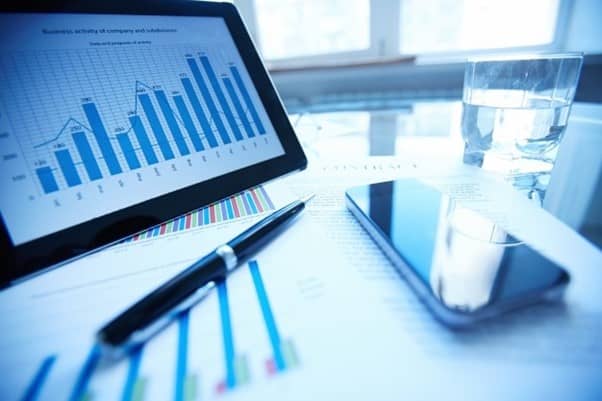A BI tool is an application that collects and processes massive amounts of unstructured data from a wide range of different sources, such as internal and external systems, such as documents and medical information. It’s possible to get information from BI tools using queries, but they aren’t as versatile as business analytics tools.
Employees and managers can use the results to speed up and enhance decision making, increase operational efficiency, pinpoint new income potentials, discover market trends, report genuine KPIs, and identify new business prospects.
Now that we know “what are business intelligence tools?” let’s move to the benefits of business intelligence tools.
What Are The Benefits Of Using BI Tools?

To begin, data discovery, which was previously only possible by those with extensive analytics training, is now accessible to the general public. These technologies also provide you with the knowledge you require to accomplish growth, problem-solving, data collection in a centralized location, forecasting future results, and much more.
Explain data is a function that enables users to uncover possible reasons for anomalies or trends in data rapidly.
An umbrella phrase for the processes and methods used to collect, store, and analyze data derived from business operations or activities is more appropriate than the more specific “object” it refers to. It’s essential to have a clear picture of a company’s operations to aid decision-making. Since its inception, business intelligence has expanded to encompass a broader range of activities and procedures to enhance output.
These are some of the methods:
- Large datasets can be analyzed for patterns using techniques such as data mining, which incorporates statistics and machine learning.
- Stakeholders can conclude and make decisions based on data analysis shared with them.
- Comparing current performance data to previous data to track performance against goals, generally via customized dashboards, employing performance metrics and benchmarking.
- Preliminary data analysis is used to discover what happened.
- Asking data-specific queries and having BI retrieve the responses from the datasets is known as querying.
- Statistics analysis of the data to determine how and why a trend occurred is known as descriptive analytics.
- Data visualization is the process of presenting the data analysis results in visual representations like charts, graphs, and histograms.
- Data is explored through visual storytelling to convey insights quickly and remain focused on the study itself in visual analysis.
- Analysis: Compiling and organizing data from many resources to determine dimensions and measurements, preparing it for analysis.
Gap Between Traditional And Modern Business Intelligence
A standard business intelligence model has been the basis of business intelligence products for a long time now. This was a top-down approach to business intelligence, in which the IT department was in charge, and static reports were used to answer the vast majority of analytical questions. Following up on the report they received would mean that their request would be put back in the queue, and they’d have to do it all over again if they had a further query. As a result, reporting cycles were long and tedious, and people could not use the most recent facts to inform their judgments.
When it comes to routine reporting and responding to static questions, the traditional approach to business intelligence is still the go-to choice. Modern business intelligence, on the other hand, is user-friendly and interactive. Multiple levels of users can configure dashboards and create reports with little notice while IT teams remain a vital element of monitoring access to data. Users can take control of their own data visualization and analysis with the right software.
Read More: Why Do All Businesses Need Business Intelligence Solutions
How Business Intelligence Is Put Into Practice
Questions and objectives abound for companies and organizations. They collect data, analyze it, and then decide what steps to take to attain their goals to get the answers they need.
The company’s operations generate raw data, which is then analyzed regarding technological elements. To store and analyze the information that has been acquired, data warehouses are utilized. Once data has been saved, it can be retrieved and analyzed to answer business-related queries.
Interplay Between BI, Data Analytics, And Business Analytics

The term “business intelligence” encompasses both data analytics and business analytics. However, the terms are used only in conjunction with one another. Analyzing data and concluding is more accessible with business intelligence (BI). Data scientists use advanced statistics and predictive analytics to uncover trends and anticipate future patterns. What is possible in the future? In the realm of data analytics, this is a frequently asked question.
Business intelligence transforms the results of those models and algorithms into understandable language that can be used to make decisions. Data mining, predictive analytics, applied analytics, and statistics are all covered in the definition of “business analytics” in Gartner’s IT glossary, which can be found here. In a nutshell, business analytics is an essential component of a company’s overall business intelligence strategy. Decision-makers and planners rely on business intelligence (BI) to provide quick and accurate responses to specific issues.
However, the process of analytics may be used to enhance the questions and iterations that follow continually. Business analytics should not be a linear process because the answer to one question will almost certainly lead to other questions and iterations. Instead, consider it a continuous data access cycle, discovery, exploration, and sharing.
Business Intelligence’s Upcoming Responsibilities
Every year, to keep users abreast of the latest developments in business intelligence, we identify current trends. AI and machine learning are here to stay, but businesses can use the insights from AI to improve their business intelligence strategy. As firms attempt to be more data-driven, sharing and collaborating efforts will expand. Data visualization will be even more critical to collaborate across departments and teams.
This article offers insights into consumer behavior, and profit forecasting is just a few of the benefits of BI’s near real-time sales tracking capabilities. BI has been adopted by a wide range of businesses, including retail, insurance, and oil, and more are doing so every year. Platforms for business intelligence (BI) are constantly evolving to keep up with the demands of its customers and new technologies. We’ve compiled a list of the top ten BI trends so you can stay on top of everything that’s going on right now.
Summary:
We have tried to answer what are business intelligence tools and how we can use BI tools to combine a wide range of data analysis applications. Business Intelligence dashboards and performance scorecards that present business indicators and KPIs in easy-to-understand visuals can also be included. Of late, HazenTech has emerged as the best business intelligence software provider.
Visit our website to learn more about our business intelligence solutions.










